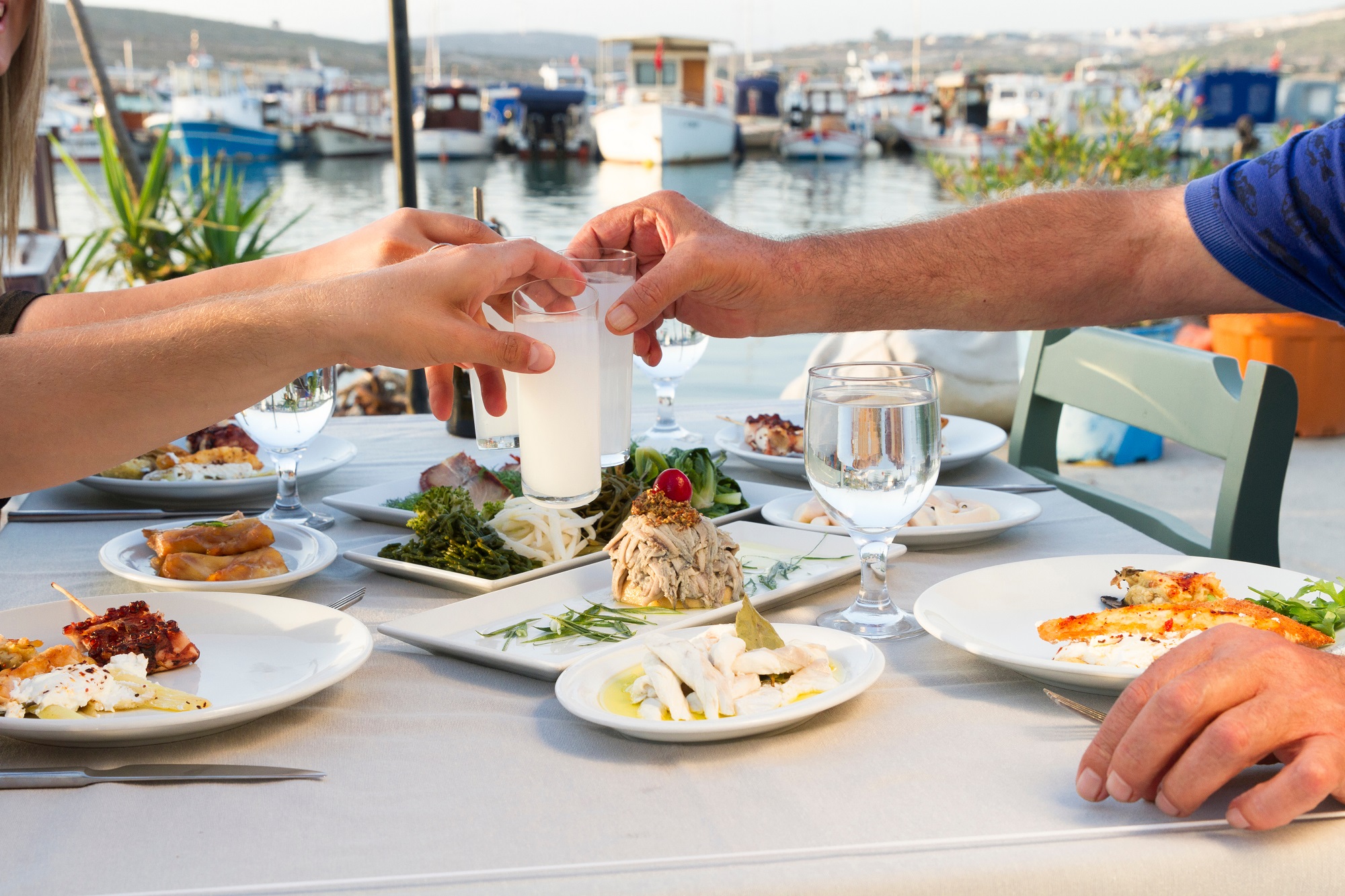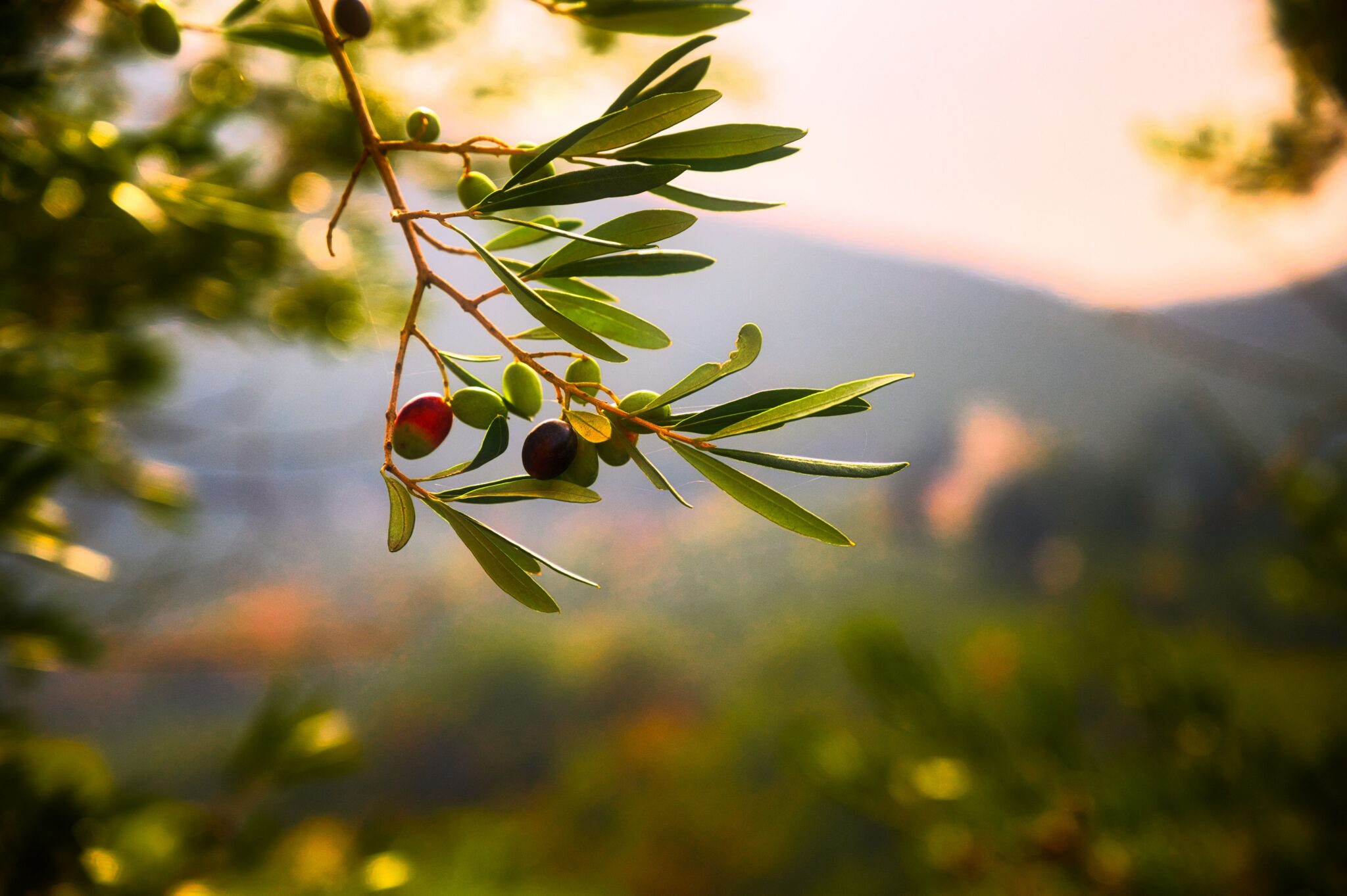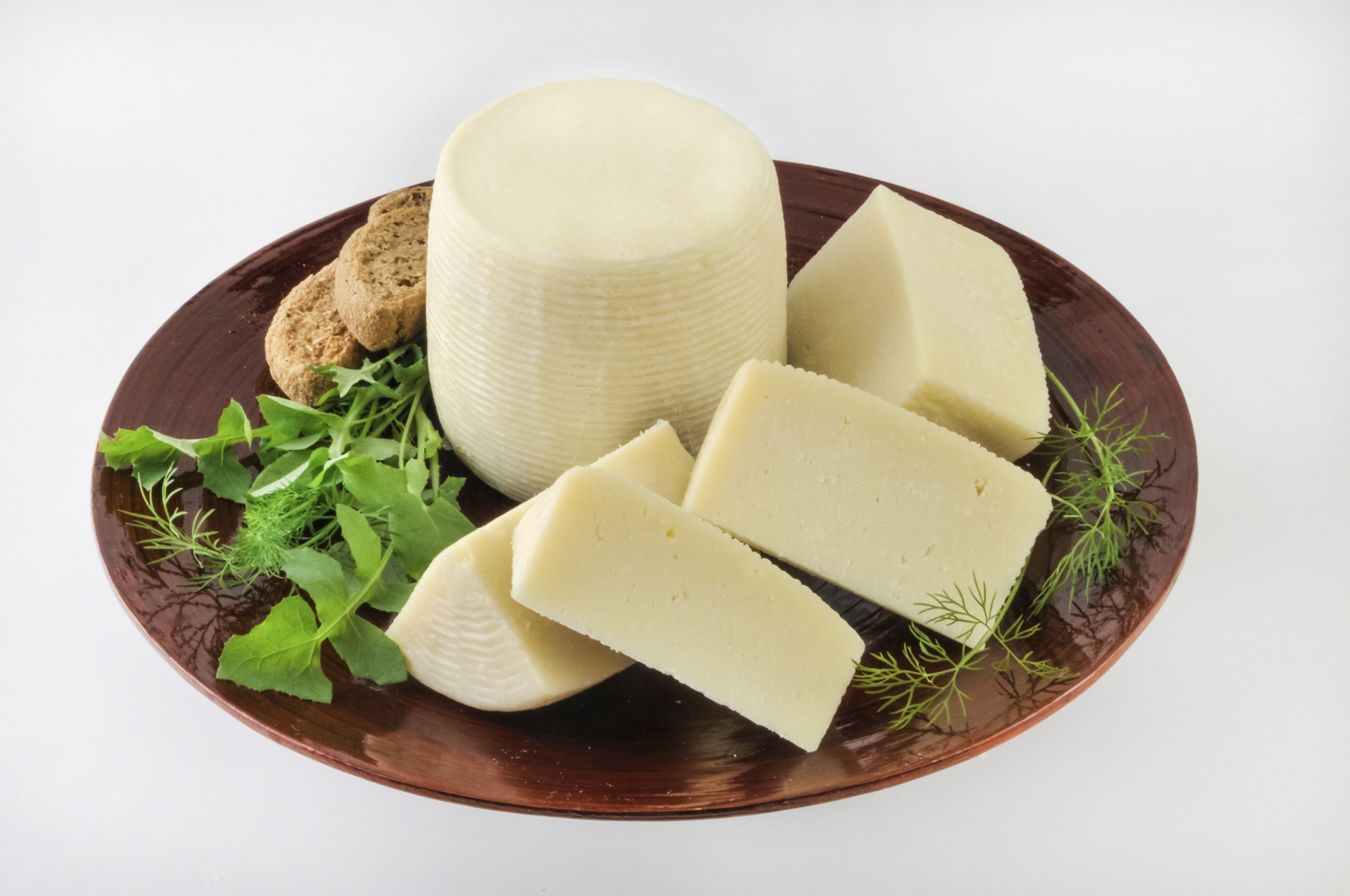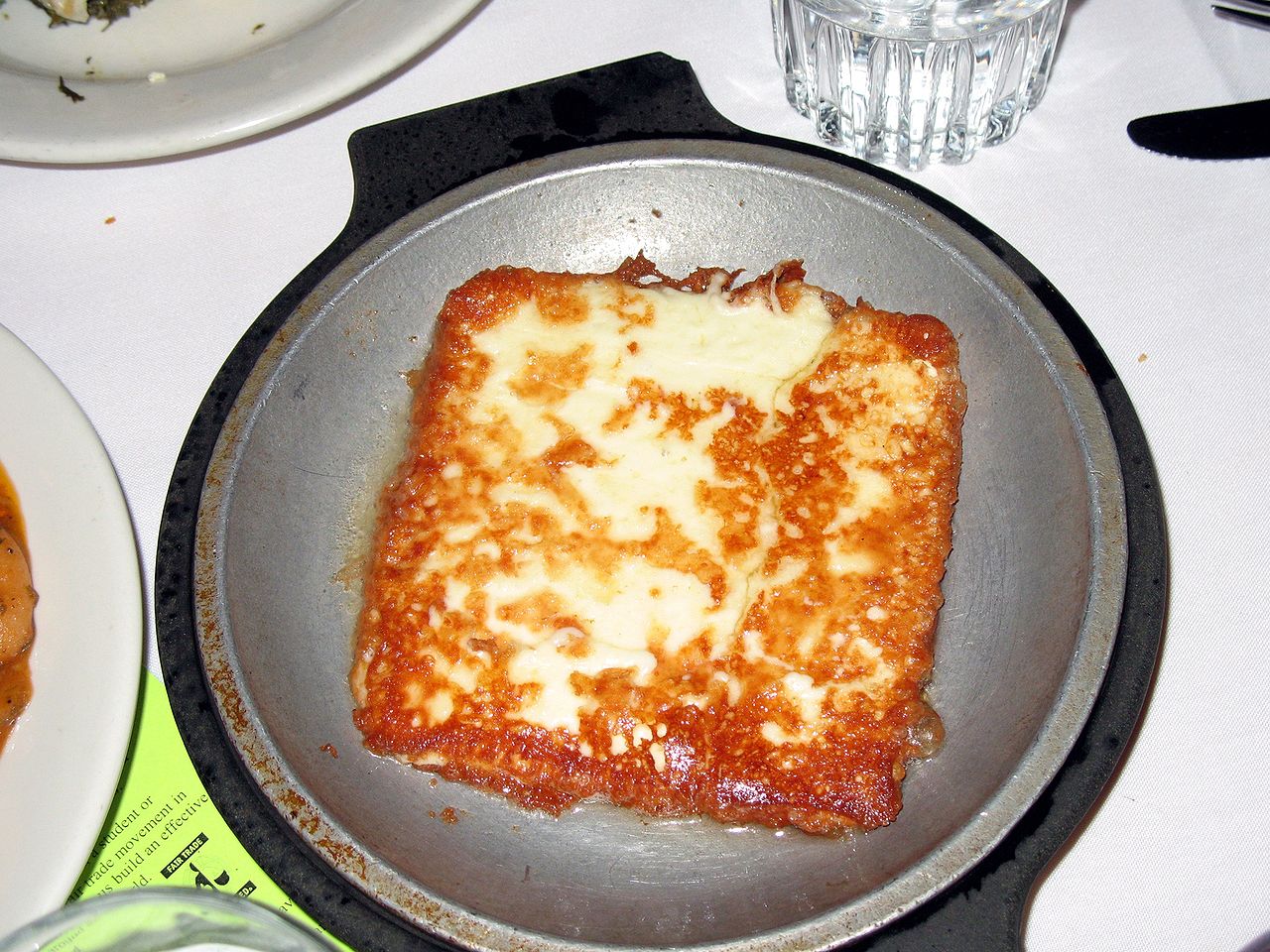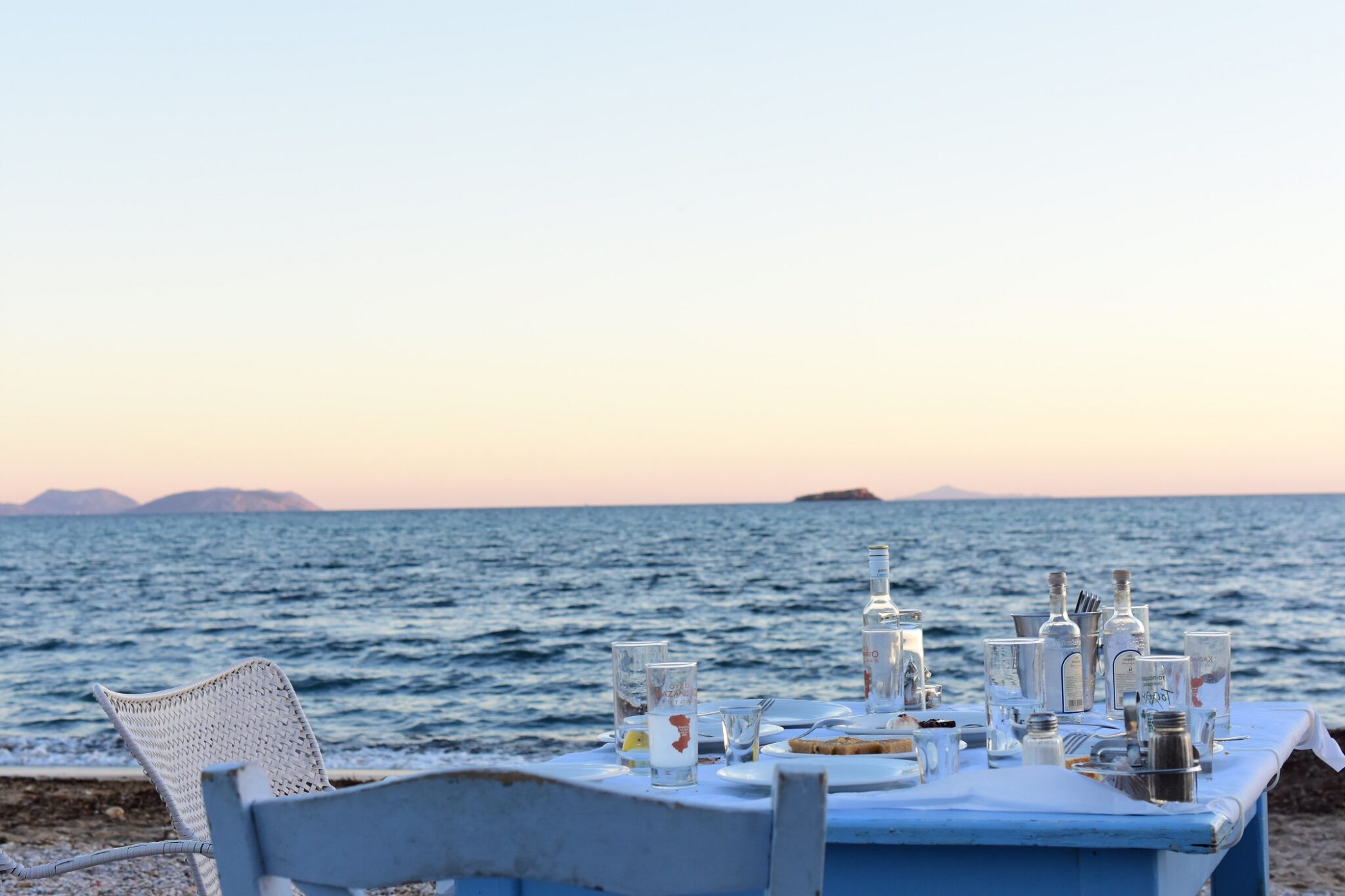From the famous salt-cured sardines of Kalloni to various kinds of ouzo and juicy olives and beyond, the island celebrates the meze ritual as well as the rich flavours of home-cooked stews and oil-based dishes.
Lesvos is one of the most important and interesting culinary destinations in Greece, with excellent local produce and a singular traditional local gastronomy, yet it remains underexploited by the tourism market.
There are many reasons why Lesvos has developed such an outstanding local gastronomy. For the inhabitants of Lesvos, stopping for ouzo and fish meze at lunchtime or in the evening is part of their everyday life and not a special occasion or a sacred ritual.
The island is famous for both its ouzo production and its fish and seafood, and in the ouzeries of Lesvos, you will find an incredible array of little dishes with big taste profiles. Small fried fish, seafood in the pan, shellfish, and large fish are abundant, and the professionals handle the raw ingredients with verve. They neither overcook them nor smother them in sauces and spices, leaving their natural flavours to shine. They cook them gently, just enough to bring out their essence and aroma, the smell of the sea, and to pair perfectly with the local ouzo.
There are four key reasons why Lesvos‘ has developed such an outstanding culinary identity. Firstly, the island has a large production of important local products, including olives, abundant vegetables and fruit, and a strong animal farming industry, centred on goats, sheep, cattle, pigs, and poultry. Of note are the local breed of sheep, known as “karagiozides,” and the Maltese goats that graze freely. Secondly, the developed urban class and consciousness of the island also play a vital role in shaping its gastronomy. Thirdly, the island was heavily influenced by the cuisine of Asia Minor. And finally, the production of ouzo, the drink that is world-renowned and synonymous with the island and Greece, which has to be accompanied by a variety of meze.
Lesvos is home to approximately 11.5 million olive trees, making it an endless olive grove that produces exceptional extra virgin olive oil. The island boasts several local varieties of olives, including Valanolia, Kolovi or Mytilini, which is unique to Lesvos, Ladolia, and Adramytini or Aivaliota or Frangkolivia. There are also two impressive olive oil museums on the island: the Museum of Industrial Olive Oil Production of Lesvos and the Olive Press – Vranas Museum.
Lesvos has a significant cheese-making tradition, with famous PDO cheeses such as the spicy ladotyri, which becomes even more pungent the longer it stays in olive oil, Mytilene feta, and Eresos Kasseri. Other local cheeses include the fresh and soft touloumi cheese matured in animal stomachs, the white, tangy tirovolaki cheese matured in baskets, the exquisite graviera cheese, the kefalotyri cheese, and the myzithra cheese.
The local cuisine is rich, strongly influenced by the Greek refugees who arrived here following the Asia Minor catastrophe in 1922. Signature dishes include “souganias” (onion leaves stuffed with minced meat and rice), “hachles” (cups made from dried food pulp, served filled with tomato, feta and olive oil), “sfougato” (omelette with courgettes, eggs, and herbs), courgette flowers filled with rice, “giouzlemedes” (fried cheese pies), tomatoes and aubergines stuffed with octopus, sardines stuffed with pickles and capers or grilled wrapped in vine leaves, cabbage rolls filled with cod and lamb stuffed with liver, raisins and pine nuts (a traditional Easter dish). Religious food served at festivals includes “keskesi” – beef, sheep, or goat meat boiled with wheat, and stirred for hours until it becomes creamy.
The meze culture revolving around ouzo is dominant on the island, and fish pastes, known as “alipasta” hold a prominent place. Among them are the Kalloni sardines cured in coarse salt, the remarkable “papalina”, Kalloni sardine lightly salted just a few hours, marinated gavros (anchovy) in oil and vinegar with garlic, sun-dried fish with oil and lemon, charcoal-grilled octopus splashed with strong vinegar, shellfish – scallops, raw or grilled, and quinces. Saganaki (melted cheese) dishes, with oil cheese or shrimp or mussels, are also an integral part of the mezze for ouzo.
Desserts
An array of spoon sweets is derived from the island’s plentiful fruits. Also, almond and flower water baklava, “gemata” (almond sweets), the Christmas “plazeta” (a syrup-drenched pie with many layers sprinkled with walnut or almond and cinnamon), and the unique Agiasos vasilopita with numerous layers of mizithra cheese and spices are all well worth trying.
Drinks
The famous ouzo, a distillate produced from the processing of ethyl alcohol with sweet anise or fennel that lends it its distinctive aroma, is exclusive to Greece and Cyprus (EEC 1576/89) and carries the additional PDO designation for Mytilene and Plomari. The island houses about 20 distilleries, nearly covering 50% of the nation’s ouzo production. In ancient times, the wine of Methymna was considered the nectar of the Olympian Gods. The phylloxera infestation that hit the island in the late 19th century destroyed the vast vineyards to the benefit of the olive trees, and only in recent years has there been an attempt to revive viticulture and winemaking, with wineries even producing organic wine. Since early 2011, Lesvos’ vineyards have been designated PDO Lesvos.
Local products of excellent quality include the island’s famous ouzo, honey, olive oil (which has seen a surge in quality in recent years), olives, the well-known Kalloni sardines, “hachles” (trahanas in the shape of a small boat), smoked fish (like anchovy, mackerel, and skipjack tuna), a special sausage and pastourma (smoke-cured meat), and dairy products like probiotic yogurt, feta, PDO kasseri, graviera, kefalotyri, dry mizithra, and lastly, the unique PDO cheese of the island, the famous ladotyri.
Read also:
A Spirited Tour of Some Ouzo Distilleries on Lesvos
Agiasos, the colourful mountain jewel of Lesvos
Lesvos: Gastronomic paradise of the Northern Aegean with turquoise waters and sandy beaches



